How to Clean a Boat Engine After Salt Water: Expert Tips and Techniques
Keeping your boat engine clean after saltwater use is crucial to ensure its longevity and optimal performance. Saltwater can cause severe damage to your boat’s engine, and if left uncleaned, it can lead to costly repairs. In this article, we will provide you with a step-by-step guide on how to clean your boat engine after saltwater use.
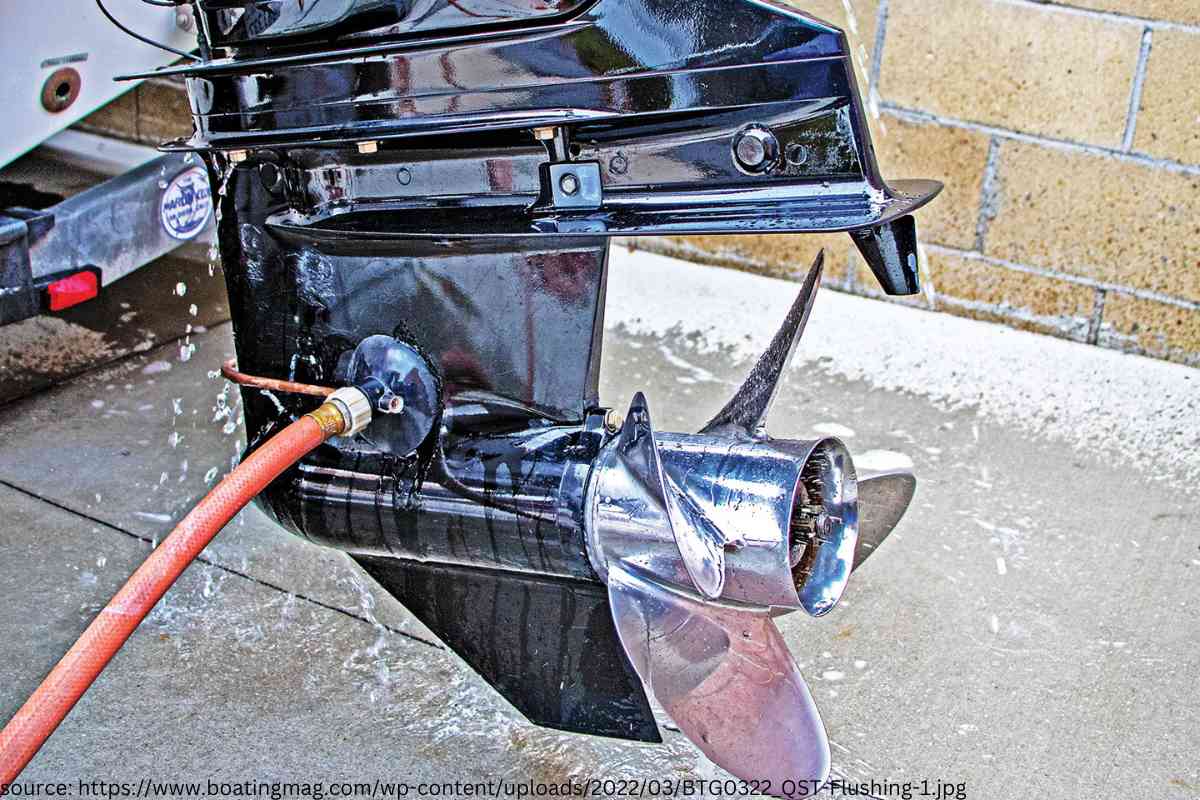
How do you clean a boat engine after being in salt water?
The first step in cleaning your boat engine after saltwater use is to rinse it thoroughly with fresh water. This is to remove any salt deposits that may have accumulated on the engine. After rinsing, you can use a solution of equal parts white vinegar and water to clean the engine. Spray the solution onto the engine and let it sit for several minutes before using a brush to scrub away any remaining salt deposits.
It’s essential to gather all the necessary supplies before cleaning your boat engine. A variety of items are required to ensure a thorough job is completed.
By following the steps outlined in this article, you can keep your boat engine in top condition and enjoy your boating experience with absolute peace of mind.
Understanding Salt Water Exposure
Saltwater exposure can be damaging to a boat engine, especially if left uncleaned. Saltwater contains salt, which can cause corrosion and buildup on the engine’s various components. Salt buildup can block the cooling system, causing the engine to overheat and potentially leading to serious damage.
Saltwater boaters should be aware of the risks of saltwater exposure and take steps to prevent damage to their boat engine. Regular cleaning and maintenance are essential to keep the engine running smoothly and prevent costly repairs.
When cleaning a boat engine after saltwater exposure, it’s important to use the right cleaning materials to avoid damaging the engine. Saltwater exposure can corrode metal components, so it’s crucial to use cleaning materials that are safe for use on metal parts.
Additionally, it’s important to rinse the engine with fresh water as soon as possible after boating in saltwater. This helps to remove any salt buildup before it has a chance to cause damage to the engine.
Understanding saltwater exposure and taking steps to prevent damage can help keep a boat engine running smoothly and prevent costly repairs. Regular cleaning and maintenance are essential for saltwater boaters to ensure their engine remains in good condition.
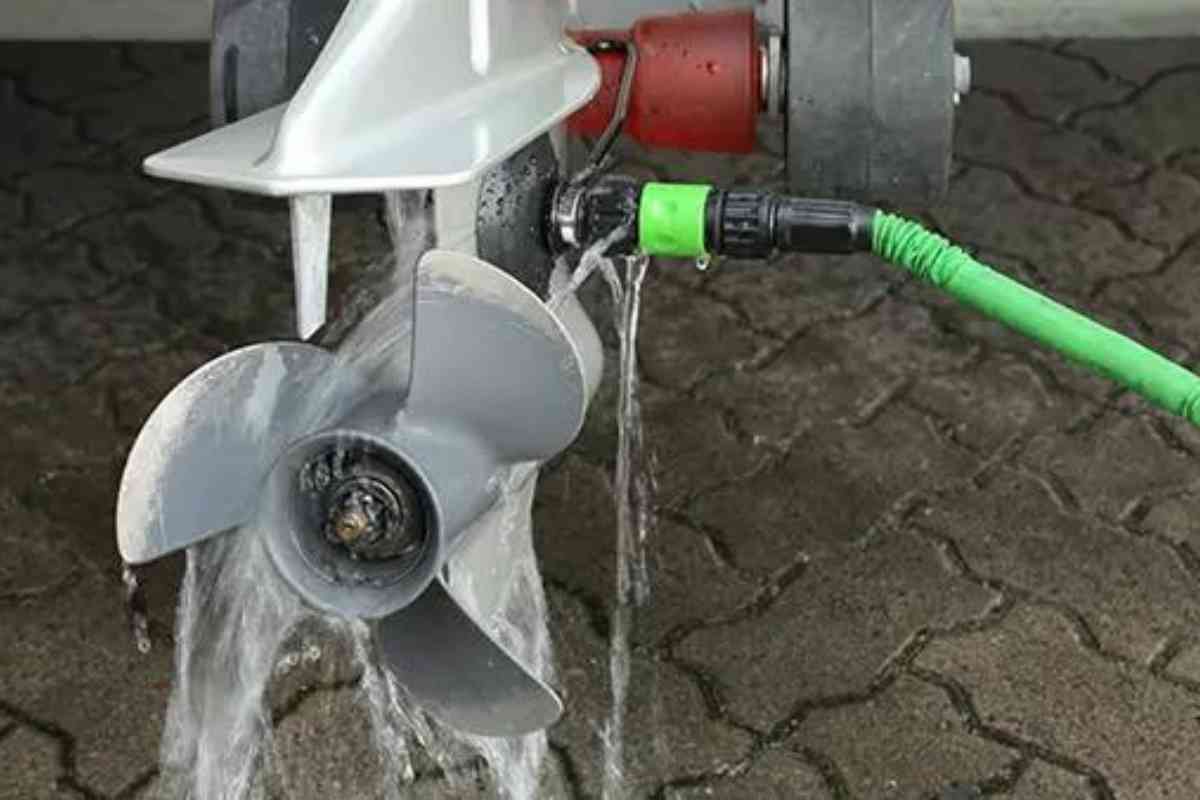
Importance of Regular Boat Engine Cleaning
Regular boat engine cleaning is essential to ensure the longevity and optimal performance of your vessel. Saltwater is highly corrosive and can cause significant damage to your boat’s engine and other components over time. Neglecting to clean your boat engine after saltwater use can lead to serious problems, such as clogged cooling systems, rusted and corroded parts, and reduced engine efficiency.
Cleaning your boat engine after saltwater use is crucial to remove any salt deposits that may have accumulated on the engine’s surface.
Salt deposits can cause corrosion, which can lead to engine failure if left unchecked. Regular cleaning also helps to prevent the buildup of other contaminants, such as dirt, oil, and grime, which can reduce engine performance and efficiency.
The following are some tips for cleaning your boat engine after saltwater use:
- Start by flushing the engine with fresh water to remove any residual salt from the surface of the engine.
- Next, use a solution of vinegar and water (1:1 ratio) to wipe down all surfaces of the engine. Vinegar is an excellent natural cleaner that can help to remove salt deposits and other contaminants from the engine’s surface.
- Use a soft-bristled brush to scrub any stubborn salt deposits or other debris from the engine’s surface. Be sure to use a brush that is gentle enough not to scratch the engine’s surface.
- Rinse the engine thoroughly with fresh water to remove any remaining vinegar solution and debris.
- Dry the engine with a clean, dry cloth to prevent water spots and corrosion.
Regular boat engine cleaning is a simple but essential task that can help to extend the life of your vessel’s engine and ensure optimal performance. By following these simple steps, you can keep your boat engine clean and in top condition for years to come.
Materials Needed for Cleaning Boat Engines
Properly cleaning a boat engine after saltwater use is essential to maintain its longevity and structural integrity. Here are some of the materials you will need for cleaning a boat engine:
Cleaning Materials
The first step is to find the right cleaning materials. You will need to use boat soap, degreaser, detergent, and cleaning supplies that are specifically designed for boat engine cleaning. Using household cleaners or industrial cleaners can be harmful to the boat engine and the environment.
Cleaning Brush and Microfiber Cloth
A cleaning brush and microfiber cloth are essential tools for cleaning boat engines. Use a cleaning brush to scrub the surface of the engine, and a microfiber cloth to wipe it down. Microfiber cloths are gentle on the surface and do not leave any scratches.
Garden Hose, Rags, and Bucket
You will need a garden hose, rags, and a bucket to rinse the engine and wipe it down. Use the garden hose to rinse off the engine, and the rags to wipe it down. Keep a bucket of water nearby to rinse the rags and keep them wet.
Sponge
A sponge is useful for cleaning hard-to-reach areas and tight spaces in the engine. Use a sponge to scrub the surface of the engine and to remove any dirt and grime.
Pressure Washer and Nozzle
If you have a pressure washer, you can use it to clean the engine. Use a low-pressure setting and a wide nozzle to avoid damaging the engine. Be careful not to spray water directly into the engine’s electrical components.
Using the right materials and tools is essential for properly cleaning a boat engine after saltwater use. By following these steps, you can ensure that your boat engine remains in good condition for years to come.
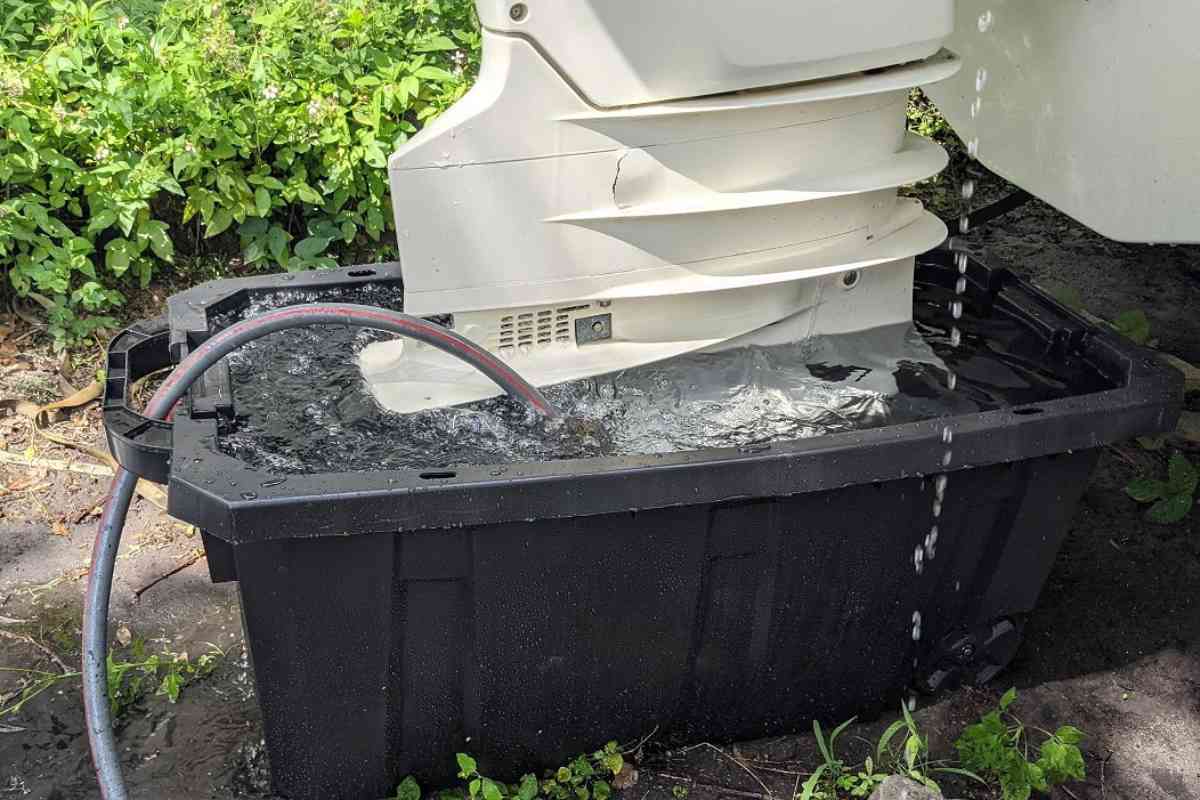
Steps to Clean a Boat Engine After Salt Water
Cleaning your boat engine after saltwater use is crucial to ensure its longevity and structural integrity. Here are the steps you can follow to clean your boat engine effectively:
Rinsing the Engine
The first step in cleaning your boat engine after saltwater use is to rinse it thoroughly with fresh water. Rinse the entire boat with fresh water before starting the engine to remove any salt and grime buildup. This will prevent salt from corroding the engine.
Applying Cleaning Solutions
After rinsing the engine, apply a cleaning solution to remove any remaining salt and grime buildup. You can use a mild dish soap mixed with water or a specialized boat engine cleaner. Apply the cleaning solution to the engine and let it sit for a few minutes to break down the salt and grime.
Scrubbing the Engine
Once the cleaning solution has had time to break down the salt and grime, use some elbow grease to scrub the engine. Use a soft-bristled brush to scrub the engine thoroughly. Be careful not to damage any delicate parts of the engine.
Rinsing and Drying
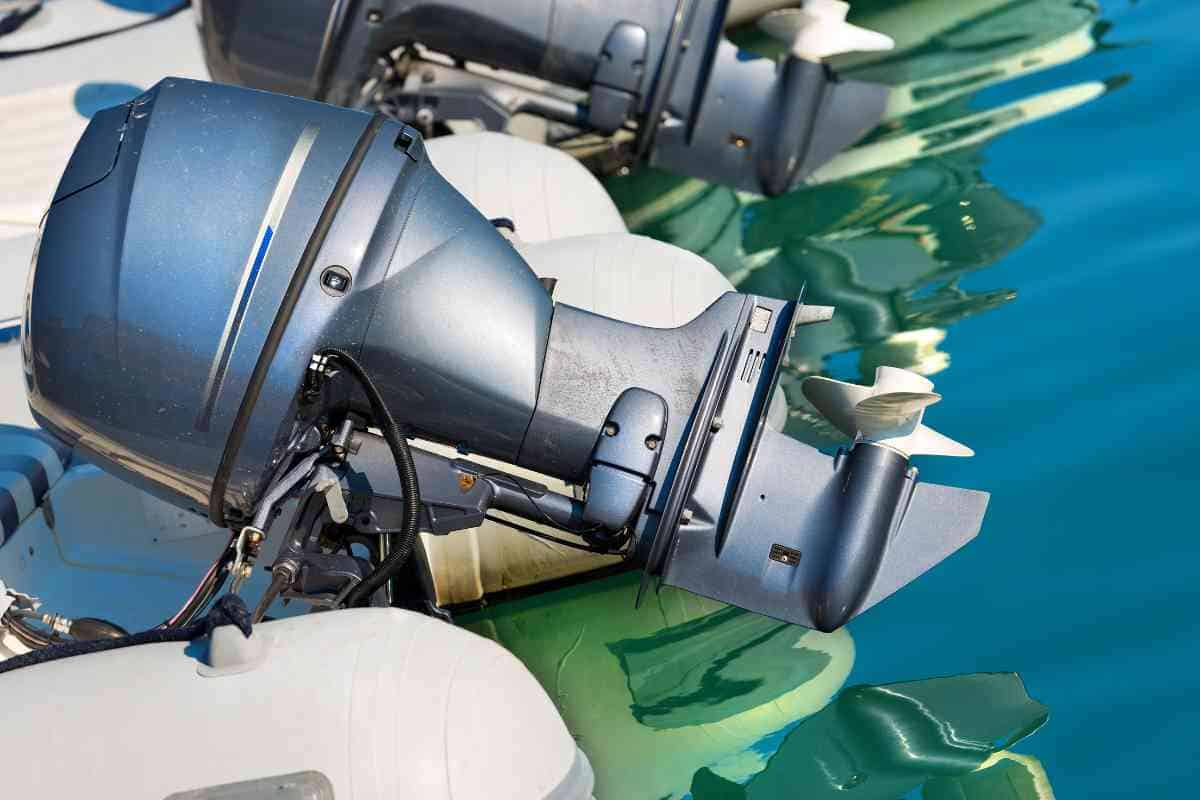
After scrubbing the engine, rinse it thoroughly with fresh water to remove any remaining cleaning solution. Use a squeegee to remove any excess water from the engine and then allow it to air dry completely. You can also use a clean, dry cloth to wipe down the engine and remove any remaining water.
Cleaning your boat engine after saltwater use is essential to ensure its longevity and structural integrity. By following these simple steps, you can effectively clean your boat engine and prevent salt from corroding it. Additionally, you can apply wax or polish to the engine to protect it from future saltwater exposure. If you want to use a natural cleaner, you can mix equal parts of vinegar and water to clean your boat engine.
Maintaining Electrical Connections and Hoses
When it comes to cleaning a boat engine after salt water use, it’s important not to overlook the electrical connections and hoses. Salt water can cause corrosion and damage to these components, which can lead to electrical problems and leaks. Here are some tips on how to maintain electrical connections and hoses:
Electrical Connections
- Inspect all electrical connections for signs of corrosion or damage. If you notice any issues, clean the connections with a wire brush and apply a corrosion inhibitor to prevent further damage.
- Make sure all connections are tight and secure. Loose connections can cause electrical problems and even fires.
- Check the battery terminals for corrosion and clean them if necessary. A corroded battery terminal can prevent the engine from starting.
- Consider using dielectric grease on electrical connections to prevent corrosion and improve conductivity.
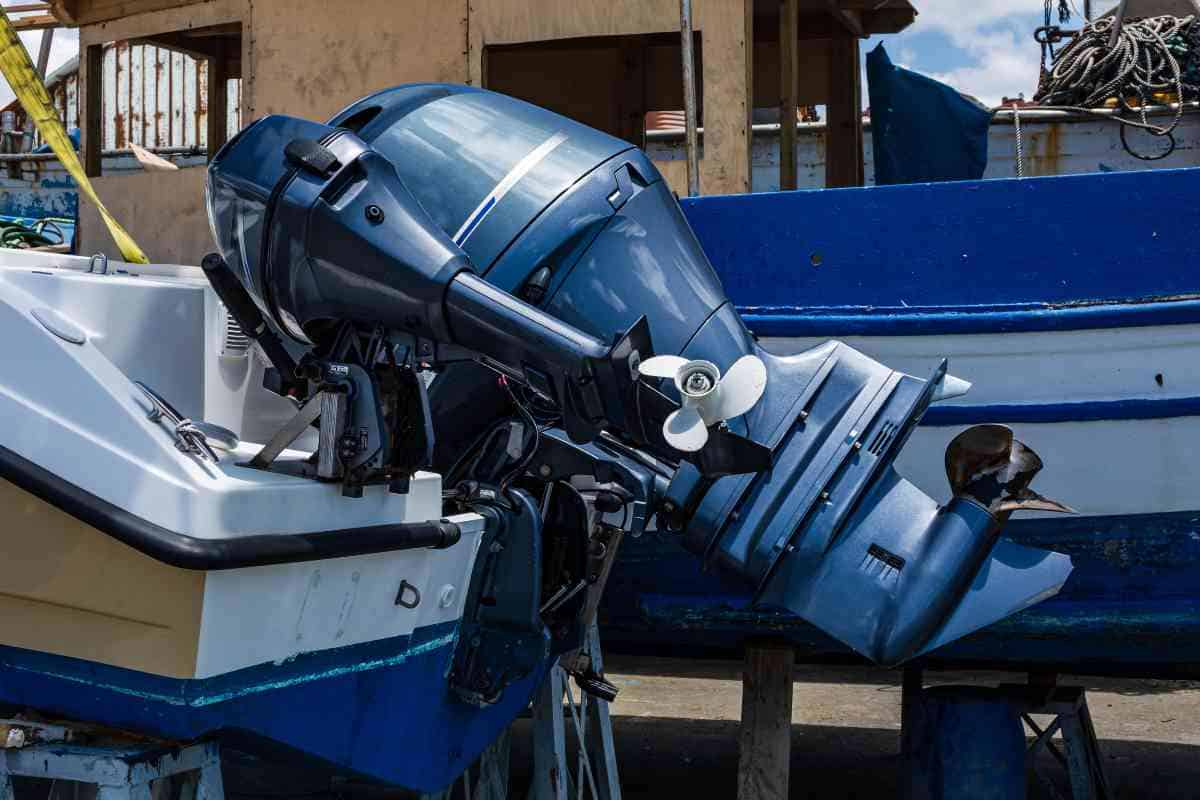
Hoses
- Inspect all hoses for signs of wear and tear. Look for cracks, bulges, or other damage that could cause leaks.
- Replace any damaged hoses immediately. A leaking hose can cause the engine to overheat or even fail.
- Use a hose clamp to secure each hose in place. Loose hoses can cause leaks and reduce the efficiency of the cooling system.
- Consider using silicone hoses instead of rubber hoses. Silicone hoses are more resistant to heat and corrosion and can last longer.
By following these tips, you can maintain the electrical connections and hoses on your boat engine and prevent problems down the line. Remember to inspect these components regularly and replace them as necessary to ensure the health of your boat engine.
Inboard and Outboard Motor Cleaning
Cleaning an inboard boat engine after saltwater use is crucial to prevent corrosion and other damage. Saltwater can corrode metal and plastic components, which can lead to permanent damage if left uncleaned. Here are some steps you can follow to clean your inboard boat engine after saltwater use:
- First, flush the engine with freshwater. You can use a hose or a bucket of water to do this. Make sure to flush out the cooling system, exhaust system, and any other areas where saltwater might have accumulated.
- Use a soft brush and mild detergent to clean the engine’s exterior. Be sure to reach all the nooks and crannies where saltwater might have accumulated. Avoid using abrasive cleaners or brushes, as they can scratch the engine’s surface.
- Rinse the engine thoroughly with freshwater to remove any soap residue.
- Dry the engine completely with a clean towel or cloth. Make sure to remove any standing water to prevent corrosion.
For outboard motors, the process is similar. Here are some steps you can follow to clean your outboard motor after saltwater use:
- Rinse the engine with freshwater as soon as possible after saltwater exposure. This will help prevent salt buildup and corrosion.
- Mix a solution of freshwater and mild soap, and use it to wash the engine. Be sure to reach all the nooks and crannies where saltwater might have accumulated.
- Rinse the engine again with freshwater to remove any soap residue.
- Dry the engine completely with a clean towel or cloth. Make sure to remove any standing water to prevent corrosion.
By following these simple steps, you can keep your inboard boat engine or outboard motor in good condition and avoid costly repairs down the line. Remember to clean your engine after each use in saltwater to prevent corrosion and other damage.
Preventative Measures and Tips for Longevity
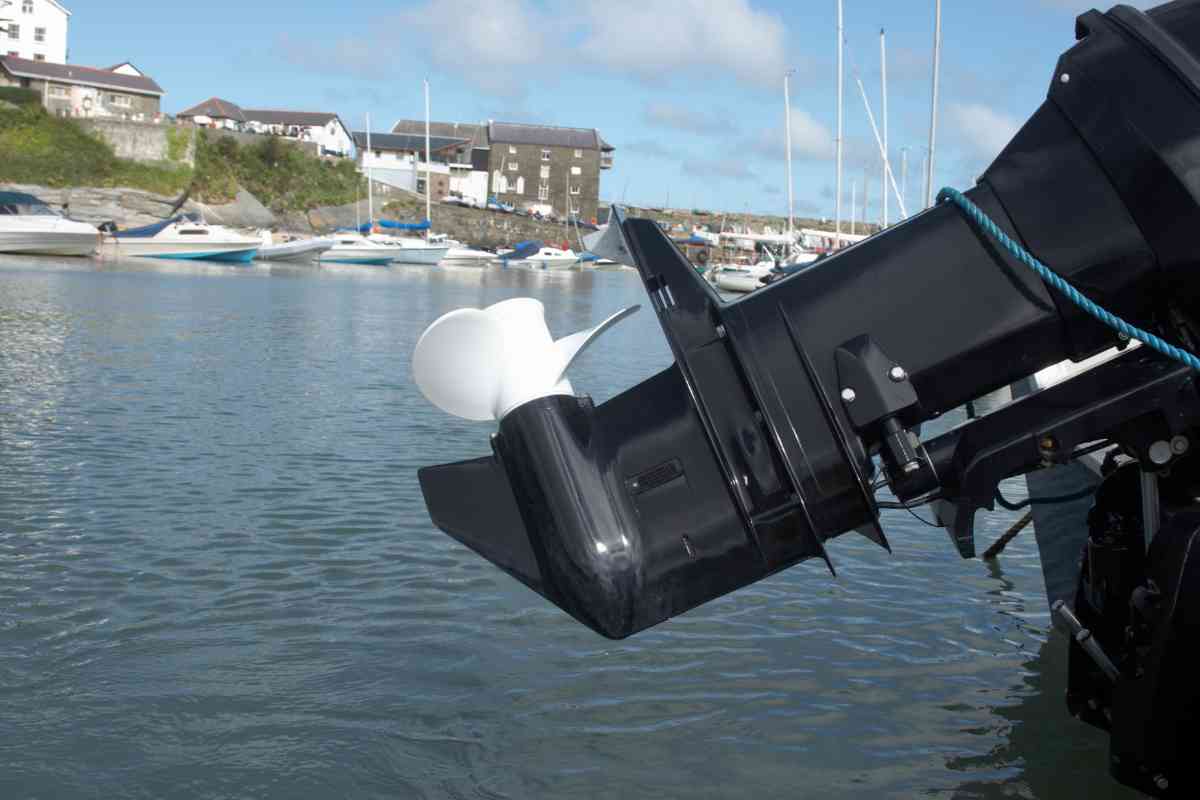
Cleaning your boat engine after salt water exposure is essential to maintaining its longevity and performance. However, there are also preventative measures and tips you can follow to minimize the risk of damage and keep your engine running smoothly.
One of the most important preventative measures is to flush your engine with freshwater after every use in salt water. This will help remove any residual salt and minerals that can cause corrosion and discoloration over time. You can use a vacuum or a hose to flush out the engine thoroughly.
Another tip is to use a high-quality grease on all metal parts of the engine to prevent corrosion and rust. This will also help the engine perform better and last longer. Make sure to check your engine’s manual for the recommended grease type and application method.
Regular boat maintenance is also crucial for preventing damage to your engine. This includes checking and replacing fluids, inspecting belts and hoses, and cleaning the engine regularly. By keeping up with maintenance, you can catch potential issues before they become major problems.
In addition, there are some tips and tricks you can use to further protect your engine. For example, you can use a vinegar and water solution to wipe down all surfaces of the engine after each use. This can help remove any remaining salt and minerals and prevent corrosion. You can also use a protective spray to coat metal surfaces and prevent damage.
By following these preventative measures and tips, you can help ensure the health and longevity of your boat engine. Make sure to also check your engine’s manual for any specific recommendations or ingredient lists for cleaning and maintenance.
Frequently Asked Questions
How long should you flush a boat motor after salt water?
Flushing a boat motor after salt water use is crucial to prevent rust and corrosion. The length of time you should flush your boat motor depends on the size of your engine and how much salt water it has been exposed to. A general rule of thumb is to flush the engine for at least 10-15 minutes with fresh water.
How do you flush a motor after saltwater?
To flush a motor after saltwater, follow these steps:To flush a motor after saltwater, follow these steps:
– Attach a hose to the flushing port on the engine.
– Turn on the hose and let the water run for a few seconds.
– Start the engine and let it run for 10-15 minutes.
– Turn off the engine and the hose.
What dissolves salt in an outboard motor?
To dissolve salt in an outboard motor, you can use a salt-dissolving solution. Mix equal parts white vinegar and water and spray the solution onto the affected areas. Let it sit for a few minutes before rinsing it off with fresh water.
How to clean inboard boat engine after salt water?
To clean an inboard boat engine after salt water use, follow these steps:
– Remove any large debris with a soft-bristle brush.
– Use a vacuum cleaner with a long nozzle to remove any sand or dirt that has collected inside the engine.
– Check all electrical connections and hoses for signs of wear or damage and replace them as necessary.
– Use a degreaser to clean the engine and wipe it down with a clean cloth.
How to clean outboard water passages?
To clean outboard water passages, follow these steps:
– Remove the lower unit from the outboard motor.
– Use a wire brush to remove any debris from the water passages.
– Soak the lower unit in a mixture of water and vinegar for 30 minutes.
– Rinse the lower unit with fresh water and reattach it to the motor.
Best salt water engine flush?
The best salt water engine flush is one that is specifically designed for salt water use. Look for a flush that contains corrosion inhibitors and is safe for use with aluminum, brass, and copper components. It is also important to choose a flush that is compatible with your engine type and size. Consult your owner’s manual or a professional for recommendations.
